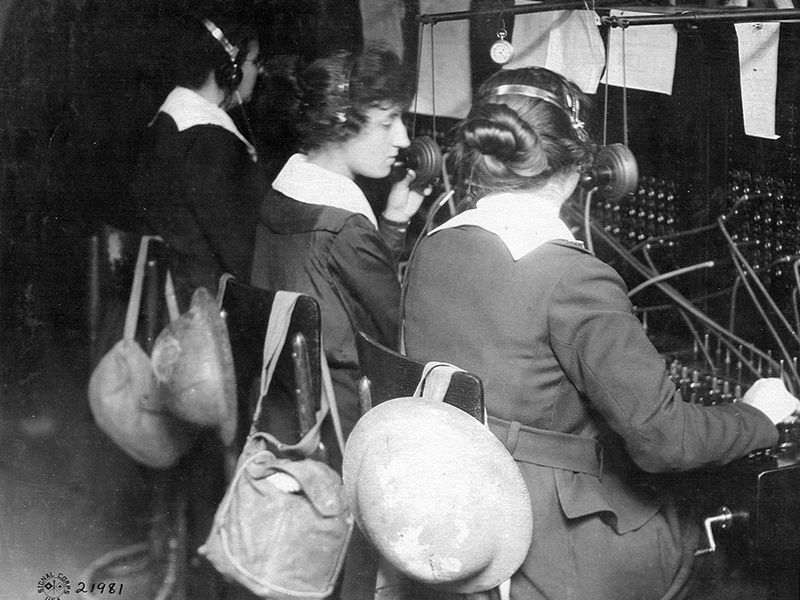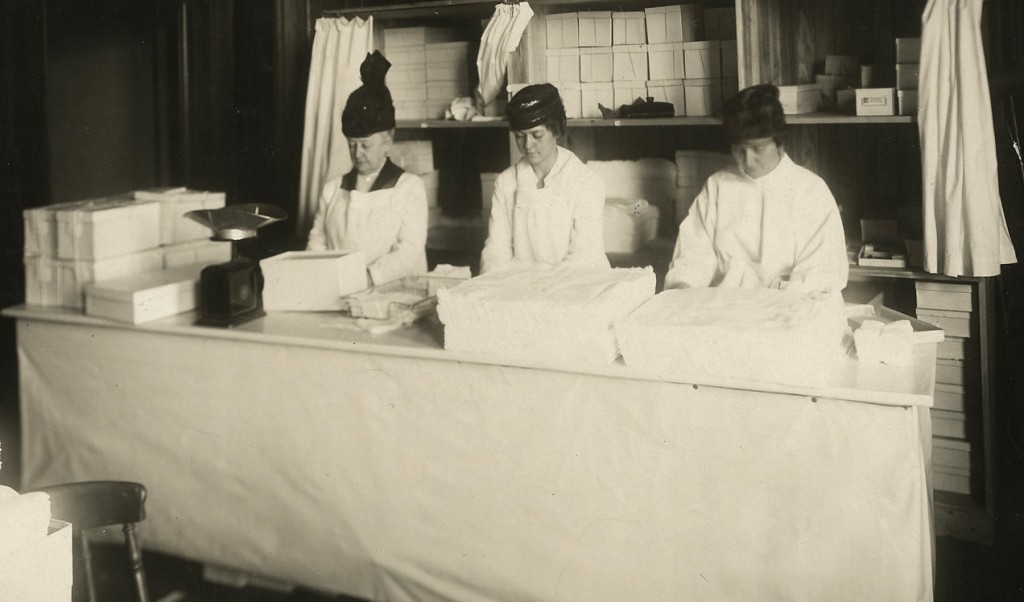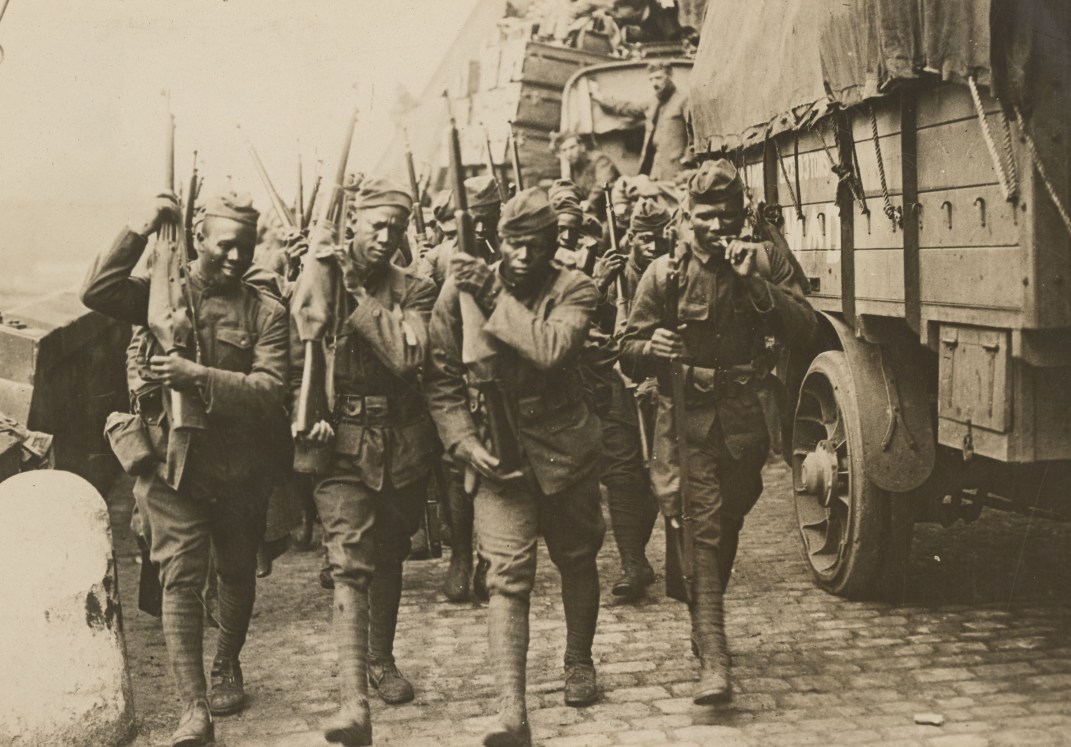Podcast: Play in new window | Download
Subscribe: Apple Podcasts | Spotify | RSS | More
 Women of the Army Signal Corps at First Army Headquarters
Women of the Army Signal Corps at First Army Headquarters
Image credit: National Archives
[/audio]
“Every order for an infantry advance, a barrage preparatory to the taking of a new objective and, in fact, for every troop movement, came of these ‘fighting lines,’ as we called them. These wires connected to the front, up with the generals and made it possible for the latter to know exactly what was going on at any moment and to direct operations accordingly.”
–Berthe Hunt, Women’s Telephone Unit of the Army Signal Corps
Just a few decades after the invention of the telephone, this technology proved vital to the execution of World War I. Troop movements, and orders to fire, cease-fire, advance, or retreat were communicated by telephone, with the help of switchboard operators. But when the American Expeditionary Forces (AEF) arrived in France, they were faced with phone lines that had been battered by three years of war. There was also the language barrier to overcome. Bell Telephone helped solve the first problem; the “Hello Girls” solved the second.
Recommended Reading—
Into the Breach, American Women Overseas in World War I, Dorothy and Carl Schneider
“Overlooked No More: Grace Banker, Whose ‘Hello Girls’ Decoded Calls in World War I,” Kasia Pilat, New York Times
Congressional Record: Proceedings and Debates of the 95th Congress, First Session
“Women On the Frontlines of WWI Came to Operate Telephones,” Lorraine Boissoneault, Smithsonian.com
“Women Telephone Operators in WWI France,” Jill Frahm




